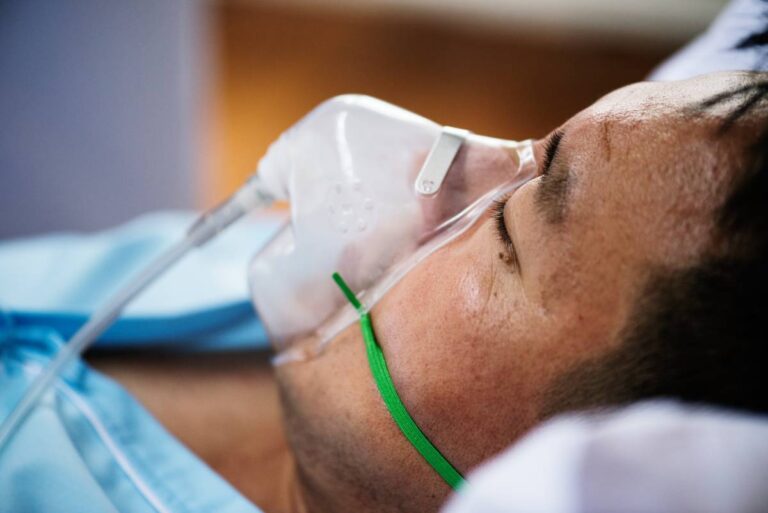Hydrodissection is a technique used in various medical and surgical procedures to separate tissue planes using a controlled stream of fluid. It involves injecting a sterile solution—typically saline, dextrose, or a local anesthetic—into the potential space between anatomical structures. The pressure of the fluid gently dissects tissues without causing mechanical trauma. This approach helps to create clearer boundaries between structures such as nerves, vessels, and organs, making procedures safer and more precise 1,2.
Hydrodissection is used across a range of specialties. In anesthesiology, it can enhance the accuracy of peripheral nerve blocks by helping to isolate the nerve from surrounding tissues. This ensures that the local anesthetic spreads evenly around the nerve while minimizing the risk of direct nerve injury or intraneural injection. In pain management, hydrodissection is also applied to treat nerve entrapment syndromes, such as carpal tunnel syndrome, by freeing nerves from scar tissue or tight fascial compartments. In ophthalmic surgery, particularly during cataract extraction, hydrodissection is used to separate the lens from the capsule, enabling easier lens removal. Similarly, in general surgery or tumor resections, hydrodissection can aid in defining tissue boundaries or reducing blood loss by sparing nearby vascular structures 3–6.
One of the main advantages of hydrodissection is its atraumatic nature. Traditional dissection methods using blunt or sharp instruments can damage surrounding tissues or nerves. In contrast, hydrodissection provides a safer way to separate layers with less mechanical force. It improves the accuracy of interventions, especially under ultrasound guidance, where the spread of fluid can be visualized in real time. In nerve blocks, hydrodissection can enhance anesthetic effectiveness by improving perineural spread. For patients with nerve entrapment, the technique can provide both diagnostic and therapeutic benefits, as the injection itself may relieve symptoms by decompressing the nerve 2,7.
Ultrasound guidance has become a cornerstone in performing hydrodissection safely and effectively. The real-time visualization of fluid spread helps clinicians identify correct tissue planes and monitor for unintended complications, such as intravascular injection or tissue swelling. The hypoechoic appearance of the fluid between structures confirms successful dissection, allowing for immediate procedural feedback and adjustment if needed 1,8.
Although hydrodissection is generally considered safe, it requires skill and anatomical knowledge. Incorrect placement of the needle or excessive fluid pressure can cause damage or lead to ineffective separation. There is also a minimal risk of bleeding, infection, or allergic reactions depending on the solution used—careful technique, sterile conditions, and proper patient selection may help mitigate these risks 9,10.
References
- Cass, S. P. Ultrasound-Guided Nerve Hydrodissection: What is it? A Review of the Literature. Curr Sports Med Rep 15, 20–22 (2016). DOI: 10.1249/JSR.0000000000000226
- Sabbineni, M. et al. Exploring the therapeutic potential of ultrasound-guided nerve hydrodissection: a comprehensive retrospective analysis. Clinical Radiology 85, 106863 (2025). DOI: 10.1016/j.crad.2025.106863
- Lin, H.-Y., Chuang, Y.-J., Lin, T.-Y., Chen, M. & Lin, P.-J. A novel minimal fluid technique for effective and safe lens hydrodissection during cataract surgery. Taiwan J Ophthalmol 9, 43–45 (2019). DOI: 10.4103/tjo.tjo_137_18
- Er, S., Baskan, S., Akcay, M., Akcay, F. & Zengin, M. Effects of hydrodissection on anesthesia characteristics in ultrasound guided infraclavicular brachial plexus blockade. Medicine (Baltimore) 101, e29241 (2022). DOI: 10.1097/MD.0000000000029241
- Neo, E. J. R., Shan, N. T. & Tay, S. S. Hydrodissection for Carpal Tunnel Syndrome: A Systematic Review. Am J Phys Med Rehabil 101, 530–539 (2022). DOI: 10.1097/PHM.0000000000001846
- Mathieu, T., Lemmens, E. & Stassijns, G. A safe and easy-to-use ultrasound-guided hydrodissection technique for the carpal tunnel syndrome: a minimally invasive approach. J Ultrasound 25, 451–455 (2021). DOI: 10.1007/s40477-021-00597-5
- Chao, T.-C., Reeves, K. D., Lam, K. H. S., Li, T.-Y. & Wu, Y.-T. The Effectiveness of Hydrodissection with 5% Dextrose for Persistent and Recurrent Carpal Tunnel Syndrome: A Retrospective Study. Journal of Clinical Medicine 11, 3705 (2022). DOI: 10.3390/jcm11133705
- Lam, K. H. S. et al. Ultrasound-Guided Nerve Hydrodissection for Pain Management: Rationale, Methods, Current Literature, and Theoretical Mechanisms. J Pain Res 13, 1957–1968 (2020). DOI: 10.2147/JPR.S247208
- Buntragulpoontawee, M. et al. The Effectiveness and Safety of Commonly Used Injectates for Ultrasound-Guided Hydrodissection Treatment of Peripheral Nerve Entrapment Syndromes: A Systematic Review. Front Pharmacol 11, 621150 (2021). DOI: 10.3389/fphar.2020.621150
- Lam, K. H. S., Lai, W. W., Ngai, H. Y., Wu, W. K. R. & Wu, Y.-T. Comment on the safety of the ultrasound-guided hydrodissection technique for carpal tunnel syndrome. J Ultrasound 26, 285–287 (2022). DOI: 10.1007/s40477-022-00664-5

